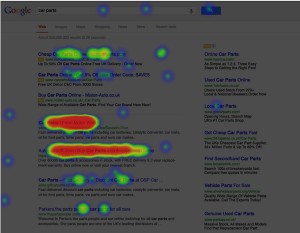What are the trends that will matter most for CMOs and other marketing leaders in 2018? Though I don’t pretend to have a crystal ball or to know exactly what’s going on in your company, I can share what’s top of mind for SYKES and our brand partners, who represent some of the world’s leading brands.
The five themes outlined here should sound familiar, as they all have something to do with the intersection of content, technology and connecting with customers. Yes, artificial intelligence (AI) does pop up — in honor of the apparent requirement that AI must be mentioned in every business trend article moving forward — but I see AI as playing more of a supporting rather than starring role. That’s because the focus needs to be on the “why,” which is to help people one interaction at a time, to create connections and build trust between brands and customers.
- Video’s value keeps growing with real-life storytelling.
Successful brands are combining the emotional impact of video with the reach and immediacy of social media to build deeper relationships with customers and prospects. Moving pictures and sound have the power to convey feeling and stimulate memory in a way that written words can’t achieve. That’s what makes video “an excellent platform for educating viewers on topics and issues directly related to your business and positioning your brand as a credible, trustworthy source of vital information,” writes Jodi Harris at the Content Marketing Institute (CMI).Whether it’s delivering a vicarious behind-the-scenes experience at a special event or a friendly product tutorial, videos play well across devices — an advantage that’s increasingly important in our mobile, multi-device world. Video content can also be designed to serve each stage of the buyer’s journey, with education at the beginning, explanatory videos at the middle and demos and testimonials at the end of the sales process. As the millennial and Z generations embrace live-streaming and social media platforms like Instagram and Snapchat, brands should present quick-hits and teaser videos shorter than 30 seconds that start playing within the platform automatically.
Though it’s clear that brands need to develop more video expertise to capture attention, the CMI advises companies to also develop a clear strategy and call-to-action to make the most of their video investment.
- Social media direct messaging could redefine customer experience.
As the use of social media messaging platforms like Facebook Messenger, WhatsApp and WeChat grows exponentially, the potential for improving customer experience also expands. Besides allowing customers to interact in a channel where they feel most comfortable, direct messaging enables companies to provide a higher quality of customer care and support. For example, when a customer or prospect raises an issue on an open social media channel, the company can take the conversation “offline” through direct messaging to protect privacy and deal with sensitive issues.
While messaging started as conversations with friends and family, the number of consumers now using direct messaging to engage with brands is astounding. According to Facebook statistics, businesses now exchange more than 2 billion messages with consumers via Messenger every month. Moreover, Facebook research shows that 54.5 percent of US social media users prefer messaging channels over email, phone and online chat, and 67 percent plan to increase their messaging with businesses over the next two years.
That said, it’s the combination of messaging platforms with chatbots powered by artificial intelligence (AI) that makes it possible for brands to engage in more relevant, personalized and helpful customer conversations at scale. The importance of this social and conversational commerce hits home when you consider that digital consumers now say they spend an average of 2 hours and 15 minutes a day on social networks and messaging — up 45 minutes since 2012 — based on the latest research from GlobalWebIndex.
- Brands go all-in on mobile or get left behind.
The link between social and mobile is clear: 91 percent of social media users access social platforms via mobile devices, according to the “Digital in 2017 Global Overview Report” from We Are Social and Hootsuite. Google’s own data shows that mobile searches make up more than half of searches on its search engine, and mobile-friendly sites show up higher in search results. Furthermore, visitors are five times as likely to leave a site that’s not mobile-friendly.
Considering that these trends are likely on the rise, effective mobile engagement strategies are critical not only for social media marketing but also for a brand’s overall digital experience; and while a majority of brands say their websites are “mobile responsive,” Google reports that many companies are missing opportunities because of poor mobile performance. Even though 53 percent of mobile site visits are abandoned if pages take longer than three seconds to load, the average loading time is 22 seconds, according to Think with Google.
Clearly, there’s more to mobile engagement than simply making websites mobile responsive. Fortunately, there’s plenty of good advice available. For technical tips, I recommend Google’s Optimizing your website for mobile. For mobile content, see Is Your Content Ready for the Mobile Takeover? from CMI.
- Customer-centric technology drives personalization and ROI.
Today, companies are expected to deliver highly targeted, personalized content at the speed of light. To achieve that, we need a 360-degree view of customer engagement across the entire journey. Acting on this customer understanding is central to a successful digital marketing strategy.
This requires customer-centric analytics that reveal important insights about customer behavior. Sometimes this means listening more and selling less. Brands need to actively listen to what buyers and customers are telling us across all channels, from social to customer service and sales. That’s what it takes to engage with empathy and authenticity — qualities that are especially valued by younger generations.
Digitally mature brands are deploying AI and machine learning to drive differentiation and opportunity. By using customer data such as digital behavior and purchase history, they’re able to make personalized recommendations. One creative example cited by GlobalWebIndex involved an airline that marked its 20th anniversary with a data-driven email campaign highlighting each customer’s travel history with the airline, including stories of their travels and ideas for where they might like to go next. By putting a personalized focus on the customer rather than the company, this campaign drew open rates 100% higher than their average newsletter.
- LinkedIn strengthens its position as most valuable channel for B2B.
With LinkedIn’s “all business all the time” focus, it’s the leading social channel for B2B marketers — 89 percent leverage it over other platforms, according to the 2017 State of B2B Digital Marketing report from DemandWave. That preference is tied to results, with 62 percent using LinkedIn for lead generation and 43 percent attributing sales to the channel.
Since Microsoft’s purchase of LinkedIn in 2016, marketers are seeing stronger opportunities to reach the 40 million decision makers and 61 million senior-level influencers that visit the site regularly to find valued business content and thought leadership. In addition to plenty of free tools for building brand awareness and publishing content, more marketers are investing in LinkedIn sponsored content and InMail (LinkedIn’s direct digital mail and messaging platform), as well as display and text ads. Most important, marketers can use LinkedIn Conversion Tracking to measure results and gain insight to guide targeting and audience understanding, testing, content strategy and more. LinkedIn also announced that in 2018 it will roll out new native video capabilities to all its 400 million users — a publishing feature currently restricted to only LinkedIn influencers.
As I wrote in an earlier post, LinkedIn is a key channel as more companies are encouraging employees to advocate for their brands on social media. In fact, LinkedIn data shows that content shared by employees has two times the engagement rate of content shared by a company. With this in mind, a “people-first” strategy will help drive referral traffic to a company’s content and thought leadership. LinkedIn also helps sales people engage with prospects and build relationships early on — an important factor as Forrester Research indicates that 57 percent of the buyer’s journey happens before a sales rep is involved.
What trends do you see?
At a time of such change in social media and digital marketing, it’s truly hard to stop with just five trends. What do you think? What do you see as the most important trends for your company? Please share your thoughts and ideas.
Digital & Social Articles on Business 2 Community(39)






